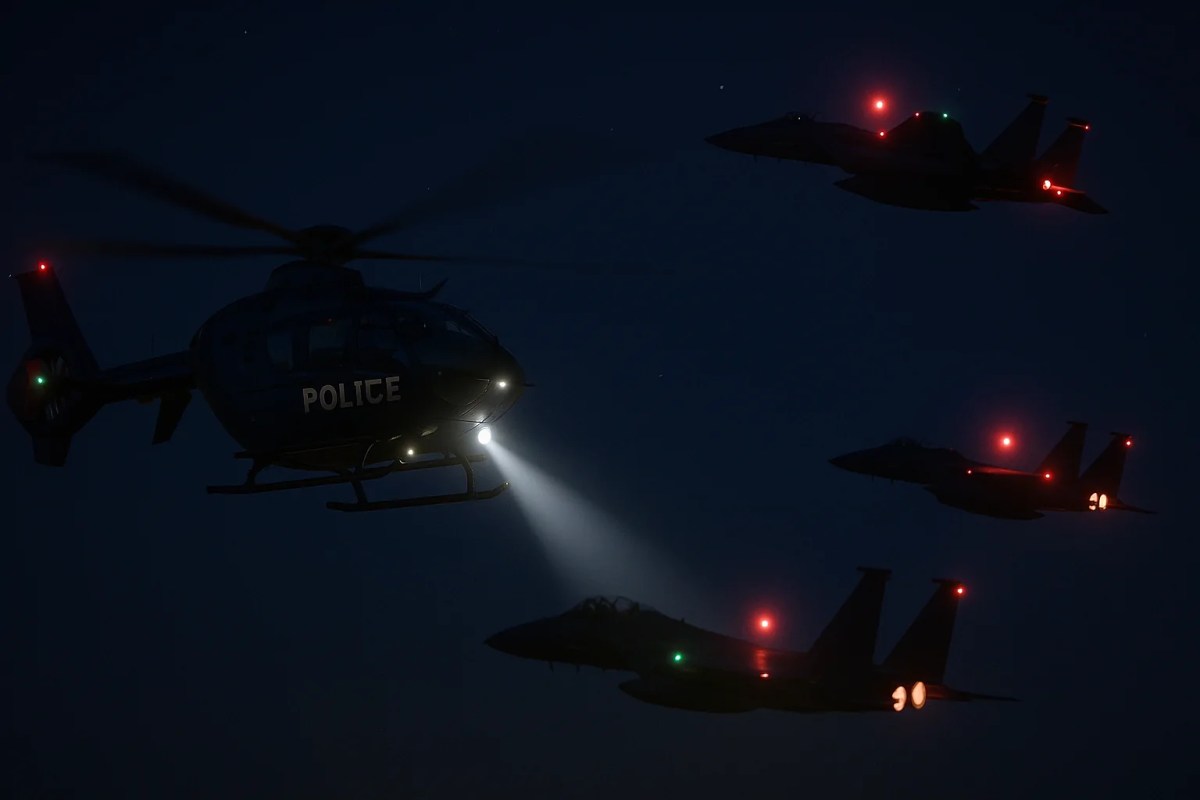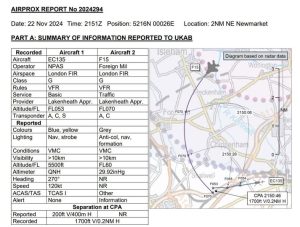Airprox 2024294: Unraveling the Incident
If you’re involved with aviation, drones, or airspace regulation—or simply captivated by aviation mysteries—Airprox 2024294 probably piqued your interest. Reported in late November 2024, this incident offers a fascinating glimpse into the intricate and occasionally humorous challenges that arise at the crossroads of manned and unmanned aviation. Let’s delve into what transpired, why it’s significant, and the lessons it holds for the drone and aviation sectors.
The Night in Question: Scene at RAF Lakenheath
On the night of 22 November 2024 at 21:51 UTC, a police-operated EC135 helicopter was on duty near RAF Lakenheath, a location renowned for its diverse air traffic. Unexpectedly, the helicopter crew spotted several moving lights maneuvering around them. Given their behavior, the immediate assumption was ‘drones!’ relying heavily on their Traffic Collision Avoidance System (TCAS), they detected no other aircraft, leading to a tense encounter nicknamed the post-Mavic era mystery.
In fact, these lights were USAF F-15 fighter jets engaged in night training, coordinated under “Overlord”, the Lakenheath Approach controller. Operating well above civilian air traffic, these jets were flying in authorized Class G airspace with distinctive lighting and formations—far from any rogue drone activity.
Key Facts and Timeline
- Closest Point of Approach (CPA):
— **1 nautical mile horizontally, 1900 feet vertically**—though regulatorily safe, this separation seemed unnervingly close to those below. - Air Traffic Control Services:
- EC135 (Police): Received only a Basic Service, devoid of guaranteed traffic information.
- F-15s: Operating on a Traffic Service, receiving full traffic information, they were briefed about the EC135.
- Misidentification Triggers:
- The TCAS of EC135 failed to flag the F-15s, partially due to their military aircraft status making them stealth on civilian systems.
- The lighting on the F-15s didn’t resemble standard aviation signals.
- With swift maneuvers and angles, and the lack of TCAS verification, the crew hastily concluded: “DRONES!”
Think of it as a situation where what seemed like a drone was, in reality, no such thing.
The Investigation: Airprox Board’s Deliberation
After examining the event through radar, audio, and ATC records, collaborating with the UK Chief Controller Team and the US Air Force in the UK, the investigation was clear-cut, albeit slightly embarrassing:
- No risk of collision was identified (Risk Category E).
- The event was attributable to misidentification and situational awareness lapses, not unsafe flying attributable to drones (or F-15s).
No pre-coordination between the police helicopter team and the military regarding activities that evening was discovered, leading to the misunderstanding.
Lessons for the Drone Community
Despite this incident not involving drones, it highlights several key areas:
1. The Risks of Misidentification
Nighttime brings its challenges, with atypical lights easily mistaken for drones. Missing or unclear TCAS data exacerbates such confusion. Such instances reinforce why verifying reports is critical.
2. Documentation as Defense
For safeguarding against false allegations, drone operators should ensure comprehensive record-keeping, including flight logs and telemetry.
3. The Crucial Role of Communication
This incident underscores the critical need for effective coordination between police and military operations, a lesson also applicable to civilian drone operators.
4. Controlling the Narrative
Given the public’s tendency to blame drones for airspace events, having solid evidence is the best strategy to direct the conversation and prevent unwarranted regulatory action.
Air Law Expert’s Insight: Missteps and Misinterpretations
Aviation lawyer Richard Ryan highlights how this wasn’t a drone issue but could have been perceived as such. He emphasizes the importance of managing narratives through meticulous data recording.
Understanding AIRPROX
‘AIRPROX’ refers to situations where aircraft or unidentified flying objects like perceived drones come dangerously close. International protocols mandate prompt, thorough investigations of such incidents.
The UK Airprox Board promotes transparency by publishing detailed reports, an approach that enhances safety and prevents misinformation.
A Near-Miss in Perception, Not Reality
While this particular Airprox event did not involve drones, it serves as a crucial reminder for the drone community about the importance of logging and data, communication, and understanding your rights as an airspace user.
Final Thoughts: Moving Forward
For stakeholders in the airspace, whether regulators or operators, this incident prompts vital steps toward improved transparency, documentation, and communication to ensure safety and reliability in crowded skies.













